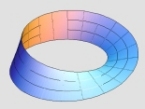Yoozername
Posts: 1121
Joined: 3/4/2006
Status: offline

|
Not sure if the numbers represent the same thing. Mittlere Streuung may not be the same as the 50% values seen in the German tables. It is possibly 'average deviation'. A sum of all the distances divided by the number of number of shots. I am convinced that the Germans are using statistics as I have shown in this thread.
My understanding of how the Germans got their WWII numbers is that they would separate each shot into it's vertical and horizontal component and then use statistics to find the 50% zone. It isn't really a rectangle or square they were using. Considering the number of shots needed for each range, and the effect this would have on the gun itself, I would guess that they really used curve fitting to get intermediate data. Possibly just testing at 100m, 500m, 1000m, etc. The 'double-dispersion' is, of course, just calculated.
Edit:
quote:
mittlere Streuung
(average deviation)
Die mittlere Streuung wird bestimmt durch die Summe der Absolutbeträge
der Abweichungen der Stichprobenwerte vom Mittelwert, dividiert durch
den Stichprobenumfang n:
Translate.... mean scatter (Average deviation) The mean dispersion is determined by the sum of the absolute values of the deviations of the sample values from the mean, divided by the sample size.
I would like to see the methodology for any of these shoots. Number of rounds fired, measurements and data manipulation. If the average deviation is reported, then I would certainly like to know a bit more. Using the 50% number, one can calculate the whole dispersion.
122 info: Table 3 seems to be for the HE and a type of AP while table 4 is for another type of AP.
< Message edited by Yoozername -- 7/28/2013 5:56:40 PM >
|
 Printable Version
Printable Version







 I would of guessed the reason some of the words were blacked out is because it said 'this is what our Soviet overlords say the values are' and the other is 'this is what we say they are'.
I would of guessed the reason some of the words were blacked out is because it said 'this is what our Soviet overlords say the values are' and the other is 'this is what we say they are'.







 New Messages
New Messages No New Messages
No New Messages Hot Topic w/ New Messages
Hot Topic w/ New Messages Hot Topic w/o New Messages
Hot Topic w/o New Messages Locked w/ New Messages
Locked w/ New Messages Locked w/o New Messages
Locked w/o New Messages Post New Thread
Post New Thread